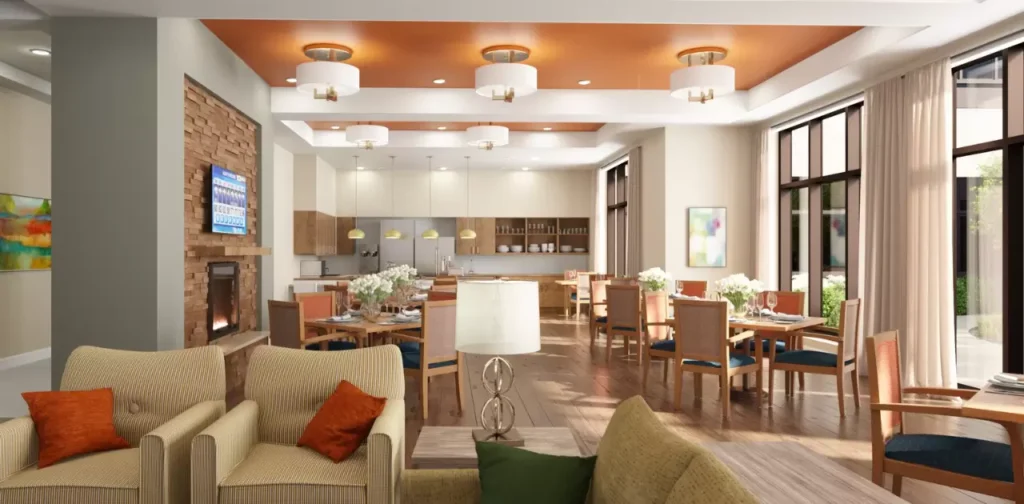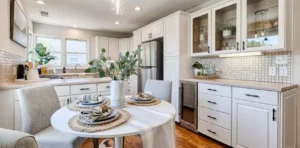Curious about the cost of a group home per month? You are not alone. Many families considering this option for their loved ones want to understand the financial commitment involved. Let’s delve into the factors that influence the monthly expenses of a group home.
Before we dive into the numbers it is essential to grasp what a group home offers. These homes also known as adult family homes or residential care homes provide a more intimate setting compared to larger assisted living communities. With fewer residents personalized attention and a homely atmosphere are often highlighted.
Several factors influence the monthly cost of a group home. Location plays a significant role, as expenses can vary depending on the region and specific neighborhood. The level of care provided the amenities offered and the size and condition of the home all contribute to the overall price tag.
Services Offered in Assisted Living Facilities
Assisted living facilities provide a range of services to support residents in their daily lives. These services often include assistance with tasks like meal preparation medication management and housekeeping.
Many assisted living facilities offer personal care services such as help with bathing dressing and grooming. This ensures that residents can maintain their independence while receiving the support they need.
Beyond basic care assisted living facilities often provide amenities to enhance residents quality of life. These may include communal dining areas social activities and even on site health clinics for convenient medical care.
Also Read this: Senior Mobile Home Parks Where You Own The Land
Medical Management in Assisted Living Facilities

Assisted living facilities offer medical management services to ensure residents receive proper care.This includes medication administration and oversight to help residents take their medications correctly.
Some facilities may also provide on-site health clinics or coordinate transportation to off-site medical appointments.These services help residents manage their health and alleviate concerns about missed doses or potential drug interactions.
A Plethora Of Personal Care Services
Assisted living facilities offer a wide range of personal care services to support residents daily needs.These services may include assistance with bathing dressing grooming and eating.
The goal is to help residents maintain their dignity and independence while ensuring they receive the necessary care.With personalized attention from trained staff residents can feel confident in their well being and comfort.
Lifestyle Amenities Galore.
Assisted living facilities boast a plethora of lifestyle amenities to enhance residents quality of life.These amenities may include beauty salons for grooming communal dining areas for social interaction and fitness centers for exercise.
Some facilities offer specialized units for memory care tailored to the needs of residents with dementia.With an array of amenities available residents can enjoy an active and fulfilling lifestyle within the assisted living community.
Services Offered in Group Homes
Group homes also known as adult family homes or residential care homes provide a range of essential services to their residents. These services typically include assistance with daily activities like eating bathing and dressing.
One of the standout features of group homes is the personalized attention residents receive. With smaller settings staff members can provide more intimate care and foster a close knit community atmosphere.
Basic assistance with daily tasks many group homes offer services such as meal preparation laundry assistance and medication management. This comprehensive support ensures that residents can live comfortably and safely in their home environment.
The Personal Care Approach in Group Homes
Group homes prioritize a personalized care approach tailored to each resident is needs.
With smaller settings staff members can provide individualized attention and support.
This fosters a family like environment where residents feel valued and supported in their daily lives.The close relationship between residents and staff ensures that each person receives the care and attention they require.
Read more blog:Why Is Mohonk Mountain House So Expensive
The Dining Experience in Group Homes
In group homes residents enjoy a homely dining experience with meals typically prepared onsite. These meals are often tailored to residents dietary needs and preferences ensuring both nutrition and satisfaction.
The communal dining setting fosters social interaction among residents creating a sense of camaraderie and shared enjoyment during meal times. The dining experience in group homes is not just about nourishment but also about building connections and enhancing the overall quality of life for residents.
Laundry Services and More
Group homes typically offer laundry services as part of their comprehensive care package ensuring residents have clean clothes without the hassle.
These homes may provide assistance with other housekeeping chores maintaining a clean and comfortable living environment for residents.
By taking care of these essential tasks group homes allow residents to focus on enjoying their daily activities and fostering meaningful connections within the community.
The Cost Factor
The cost of residing in a group home can vary depending on factors such as location level of care provided and amenities offered.
On average monthly expenses for a group home may range up to $5,000 though this can vary based on individual circumstances.
It is essential for families to consider the financial aspect alongside the quality of care and services provided when choosing a group home for their loved ones.
Living Arrangements in Assisted Living Facilities

Assisted living facilities offer various living arrangements to accommodate residents preferences and needs. Most commonly residents have the option of a private room or apartment providing maximum privacy and independence.
For those who enjoy company and social interaction some facilities also offer shared housing solutions. These communal living arrangements allow residents to have companionship while still accessing necessary support services.
Whether residents prefer solitude or companionship, assisted living facilities strive to provide comfortable and secure living environments that feel like home. Each living arrangement is designed to meet residents individual preferences and promote their overall well being.
The Privacy Factor in Assisted Living Facilities
Assisted living facilities prioritize residents’ privacy, offering private rooms or apartments for those who value solitude.Privacy ensures residents have a personal space to retreat to and maintain independence within the community.
Key points about privacy in assisted living facilities:
- Private accommodations: Residents typically have their own room or apartment, providing a secluded space.
- Personalized living spaces: Rooms are often furnished with residents’ belongings to create a sense of home.
- Respect for boundaries: Staff members respect residents’ privacy and knock before entering rooms.
- Shared spaces: While communal areas promote socialization, residents can retreat to their private quarters when desired.
- Personal care: Residents receive assistance with personal tasks in a discreet and respectful manner.
- Security measures: Facilities may have security features to ensure residents safety and privacy such as secure entry systems or surveillance cameras.
Cost and Insurance Coverage for Assisted Living Facilities
Assisted living facilities come with varying costs depending on factors like location amenities and level of care provided. On average, families can expect to pay around $4,051 per month for these services but prices may differ based on individual needs and preferences.
When it comes to insurance coverage standard health insurance policies typically do not cover the long term costs associated with assisted living. Long term care insurance can be a valuable resource for offsetting these expenses covering services like personal and custodial care.
It is essential for families to explore insurance options and understand their coverage before making decisions about assisted living. Long term care insurance can provide financial peace of mind and help alleviate the burden of high out-of-pocket costs associated with senior care.
The Role of Insurance in Covering Assisted Living Costs
Insurance plays a crucial role in covering the costs associated with assisted living facilities. While standard health insurance policies typically do not cover long term care expenses long term care insurance is specifically designed for this purpose.
Long-term care insurance helps offset the high costs of assisted living by covering services like personal care medication management and other custodial care needs. It provides financial support and peace of mind for families ensuring their loved ones receive the care they need without facing significant financial strain.
Choosing Between Assisted Living and Group Homes
When deciding between assisted living and group homes it is essential to consider factors such as individual needs preferences and financial circumstances.Both options offer unique benefits so weighing the pros and cons can help make an informed decision that best suits your loved one’s situation.
| Aspect | Assisted Living Facilities | Group Homes |
| Care Approach | Balances independence with support from staff members. | Provides personalized care in a smaller, family-like setting. |
| Social Interaction | Larger communities offer diverse activities and social opportunities. | Offers a close-knit community with intimate interaction among residents. |
| Living Arrangements | Typically private rooms or apartments, with some offering shared housing options. | Often individual rooms in a home-like setting, fostering a sense of belonging. |
| Cost | Monthly expenses can range from $4,000 to $7,000 on average. | Monthly costs vary but may range up to $5,000 depending on location and level of care. |
| Personalized Care Services | Offers a wide range of services including medication management, personal grooming, and amenities such as communal dining areas. | Provides assistance with daily tasks, personalized attention, and homely atmosphere. |
Frequently Asked Questions
What are the different types of group homes in Florida?
In Florida different types of group homes include those for individuals with developmental disabilities mental health issues or substance abuse disorders. These homes vary in size services offered and regulations depending on the specific population they serve.
How much does it cost to start a group home in Texas?
The cost to start a group home in Texas typically ranges from $50,000 to $200,000 covering expenses like licensing renovations staffing and operational costs. Exact costs can vary based on factors such as location size and specific services provided.
What is another name for a long term care facility?
Another name for a long term care facility is a nursing home or convalescent center providing residential care for individuals who need assistance with daily activities and medical supervision. These facilities cater to elderly individuals or those with chronic illnesses or disabilities who require long term support and medical care.
What is the difference between room and board and board and care?
Room and board typically refers to lodging with meals included, while board and care adds personal services like assistance with daily tasks and sometimes medical care. Board and care facilities offer a higher level of support and assistance compared to traditional room and board arrangements.
Conclusion
The decision between assisted living and group homes is a significant one that requires careful consideration of various factors. While assisted living facilities offer a balance of independence and support, group homes provide a more intimate family like environment with personalized care.
The choice depends on individual needs preferences and financial circumstances. By weighing the advantages and drawbacks of each option and considering factors such as social interaction living arrangements and cost families can make an informed decision that best suits their loved one’s well being and quality of life.











